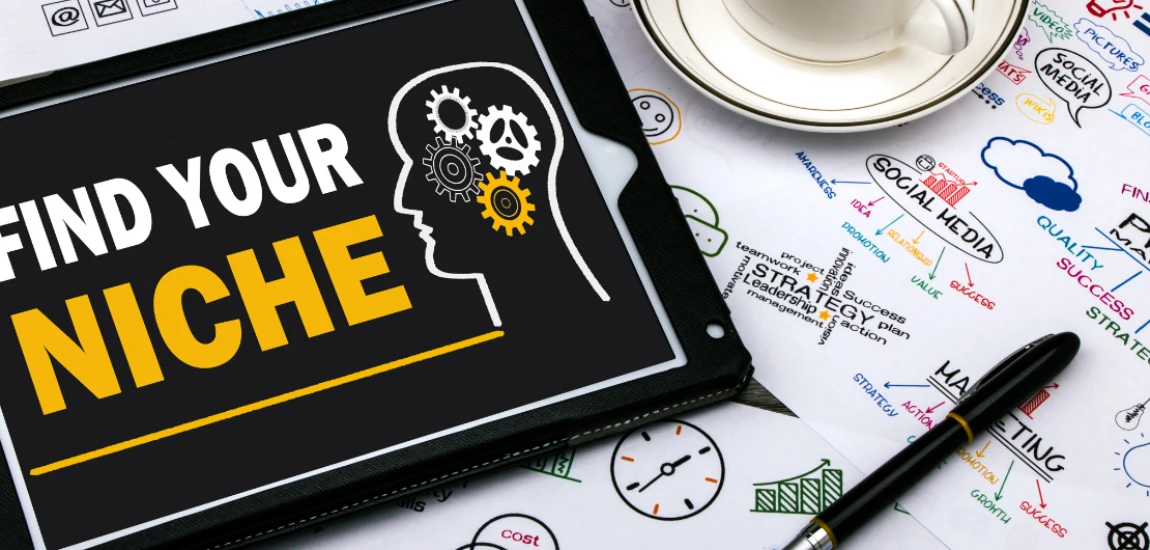Hyperfixation Nation: Why Everyone’s in a Niche Phase

One month it’s sourdough bread. The next it’s astrology memes, Stanley cups, or an obscure indie band suddenly going viral. We’re living in what could best be described as a hyperfixation nation, where cultural trends don’t just emerge—they dominate, consume, and then vanish as quickly as they appeared.
Unlike long-standing cultural movements of the past, today’s obsessions are often shorter, more intense, and highly specific. They’re less about broad pop culture phenomena and more about microtrends, niche communities, and hyper-focused identities. TikTok aesthetics like “clean girl,” “dark academia,” or “blokecore” take over feeds for weeks, only to be replaced by the next hyperfixation.
What’s fueling this cultural acceleration? Part of it is the sheer speed of social media, where algorithms amplify whatever captures engagement, turning one person’s quirky passion into a global fixation. But another part reflects a deeper psychological and cultural shift. In a world overloaded with choice, people are finding identity and belonging through fleeting, hyper-specific phases.
This blog explores the rise of the hyperfixation nation: how niche phases spread, why we love diving headfirst into them, and what it means for culture, identity, and creativity. Along the way, we’ll look at the upsides (community, exploration) and downsides (burnout, superficiality) of a culture built on ever-shifting fascinations.
The Psychology of Hyperfixation: Why We Dive So Deep
At its core, hyperfixation isn’t just about trends—it’s about how our brains work. Psychologists describe hyperfixation as intense focus on a particular subject, activity, or hobby, often linked to neurodivergent experiences like ADHD or autism. But in today’s cultural landscape, it’s gone mainstream.
Why do people latch onto hyperfixations? One reason is dopamine reward systems. When we dive into a niche phase—say, learning everything about Formula 1 after watching “Drive to Survive”—our brains reward us with bursts of novelty-driven pleasure. Each new discovery, piece of trivia, or community interaction reinforces the cycle.
Another factor is identity experimentation. In a world where traditional markers of identity (job, religion, geography) carry less weight, hyperfixations offer temporary, flexible identities. You’re not just into crocheting—you’re part of crochet TikTok. You’re not just listening to Taylor Swift—you’re in the Swiftie fandom. These niches provide belonging and language for self-expression.
The internet amplifies this psychology by offering endless rabbit holes. Platforms like TikTok and YouTube serve up content that makes it easy to become “an expert overnight,” giving users an accelerated crash course into new hobbies or fandoms. Instead of dabbling, people go all in—for weeks or months—before moving to the next fixation.
This isn’t necessarily bad. Hyperfixations can spark joy, creativity, and community. They allow people to try on new identities, learn skills, and connect with others globally. But the psychological intensity can also lead to burnout, where passion fizzles once the novelty wears off. In hyperfixation nation, depth and transience coexist, shaping how we consume culture today.

The Role of Algorithms in Fueling Hyperfixation Nation
If hyperfixation is the spark, algorithms are the gasoline. Social media platforms don’t just reflect our interests—they amplify and accelerate them. Once you show even a hint of curiosity in a niche, algorithms flood your feed with related content, pushing you deeper into the obsession.
Take TikTok, for instance. If you like or linger on one video about skincare, the app’s “For You Page” quickly fills with product reviews, routines, and recommendations. Soon, what began as mild curiosity becomes a full-blown phase—you’re learning ingredient lists, buying serums, and joining comment-thread debates.
This phenomenon explains why cultural microtrends explode so quickly. A random video about a niche hobby can go viral, sparking curiosity in thousands of viewers, which then spirals into mass adoption. Whether it’s the Stanley cup craze, “girl dinner,” or frog-themed crochet patterns, algorithms ensure that once something catches fire, it spreads globally in days.
But there’s a downside. Algorithms thrive on novelty, which means they constantly push users toward the next fixation. This creates a cycle of shallow consumption, where people move rapidly from one niche to another without lingering long enough for deeper engagement. It also flattens culture, turning personal passions into marketable trends almost instantly.
Still, algorithms also democratize hyperfixation. A small creator posting about an obscure interest can suddenly find themselves at the center of a global trend. In that sense, hyperfixation nation is less about top-down pop culture and more about bottom-up virality. The gatekeepers are gone—your next phase could start with a single viral post.

Identity in the Age of Hyperfixation
Perhaps the most fascinating aspect of hyperfixation nation is how it shapes identity. Where older generations may have anchored identity in stable categories—career, family, nationality—today’s online culture allows for fluid, niche-based selfhood.
For example, someone might cycle through phases as a “gamer,” “plant mom,” “K-pop stan,” and “true crime podcast enthusiast” all within a single year. Each hyperfixation offers not just a hobby but a temporary identity kit: the language, fashion, online communities, and even consumer goods tied to that niche.
This fluidity has benefits. It allows people to experiment with self-expression without long-term commitment. Instead of locking into one rigid identity, users can explore multiple versions of themselves. Hyperfixations create mini-worlds where you can immerse yourself fully, then step out when it no longer resonates.
However, this constant cycling also raises questions. If identity is built on fleeting phases, what anchors us long-term? Does constantly shifting between niches dilute the depth of our passions, or does it reflect a more modern, pluralistic way of being?
Interestingly, brands and influencers have caught on. Many now market themselves not around one niche, but as adaptable personalities who ride hyperfixations in real-time. Instead of long-term brand consistency, they offer relatability by mirroring whatever phase their audience is currently in.
Ultimately, hyperfixation nation reflects a shift from fixed identity to modular identity, where who we are is less about permanence and more about which niche we’re inhabiting this week.

The Upsides and Downsides of a Hyperfixation Culture
Like most cultural shifts, hyperfixation nation comes with both opportunities and challenges.
Upsides:
Creativity and Learning: Hyperfixations often lead to bursts of creativity—picking up hobbies, exploring music genres, or discovering new communities.
Connection: Niche phases connect people across geography, creating instant camaraderie through shared obsessions.
Accessibility: The internet makes it easier than ever to explore passions that might have once felt inaccessible, from birdwatching to 3D printing.
Downsides:
Burnout: Intense interest often fizzles quickly, leaving people with half-finished projects or unused purchases.
Shallow Engagement: Constant cycling between phases can discourage deeper mastery or long-term commitment.
Consumerism: Hyperfixations are often monetized, with brands pushing products to capitalize on the trend—think viral skincare, collectibles, or fashion aesthetics.
The challenge is balancing joy with sustainability. Hyperfixations don’t have to be superficial, but navigating them mindfully—choosing which to embrace deeply and which to treat lightly—helps avoid burnout and consumer regret.

How to Navigate Hyperfixation Nation Mindfully
Living in a hyperfixation culture doesn’t mean surrendering to constant whiplash. With the right mindset, you can enjoy the benefits of niche phases while avoiding their pitfalls.
Embrace the Joy, But Set Limits: It’s okay to dive headfirst into a new obsession, but set boundaries on time and spending. Ask: am I enjoying this for fun, or am I being swept by hype?
Choose Depth When It Matters: Not every phase has to be shallow. If a hyperfixation sparks lasting interest, lean into it—take classes, join communities, or develop expertise.
Detach Identity from Trends: Explore niches as expressions of self, but don’t feel pressured to define your identity by them. Phases can be fun without becoming permanent labels.
Curate Your Algorithm: Be intentional with what you engage with online. The more mindful your clicks, the more balanced your feed becomes.
Celebrate Phases Without Shame: Instead of viewing hyperfixations as silly or fleeting, reframe them as part of the joy of modern culture. You don’t have to stick with one passion forever to validate it.
By approaching hyperfixations consciously, you can enjoy the thrill of exploration while avoiding the burnout of cultural overload.




